INTRODUCTION AND THESIS
Errol Morris’ documentary, Fast, Cheap and Out of Control is about people and their obsessions because he himself has an obsession and like most of us, can identify with similar people. I’m not trying to psychoanalyze him, but I hope to show in this blog that the four characters in this film are very similar to the creator in that their obsession gives them a reason to live while letting them play God in their own realm, which also gives each a sort of immortality. Dave Hoover the Lion Trainer, George Mendonça the Topiary Gardener, Ray Mendez the Mole-Rat Specialist and Rodney Brooks the Robot Scientist are the main characters of this documentary because each have found a meaning to life through their obsessions. Morris believes in the ideology of truth, and at least some of this truth comes across in this film as finding a reason to live through the embracing of an obsession. This obsession need not make sense to others, but merely the existence of it gives every day meaning.
As I said earlier, each of these men are also playing God in a sense. They have their own world that they specialize in, create in, and control in their corresponding area. It might be making robots, giving mole rats a new habitat, creating animals from a bush, controlling lions, or even filming other human beings, yet each creates and in a way controls. For Morris, he can edit as he likes to draw connections between random individuals in order to pass his point on to his viewers. Further, each leaves a legacy, which can be seen as an attempt to gain a sort of immortality through their obsession. One has found the first mammal to act like an insect, one thinks that robots will take over the human world, one would love to never be forgotten as an entertainer like Clyde Beatty, one creates creatures in a garden that will hopefully be passed on, and Morris films documentaries that will be watched by viewer’s in days to come. Morris sums up everything I’ve been trying to say himself when he said that Fast, Cheap and Out of Control, is a”story about people constructing reality” “with mortality waiting in the wings.”
Another quote that helps to understand what Morris has done in this documentary is from Arabian Nights in Robin Wood’s article “Ideology, Genre, Auteur” from Film Theory and Criticism, that “The truth lies not in one dream but in many.” Morris’ own truth lies in his documentaries about obsessive individuals and their random (though he is able to link them) dreams.
INTRODUCTION TO ARGUMENT
As I began to develop my argument, I thought it important to first answer the question of why should we even look at films in order to analyze them? First, Maya Deren’s article “Cinematography: The Creative Use of Reality,” points out that “The definition of the creative form of film involves as careful attention to what it is not as to what it is”(187). If this is so, then any successful film needs to be analyzed to find what is not. On a different vein, Dudley Andrew’s essay “Adaptation” asserts that “We need to study films themselves as acts of discourse” (469). They aren’t all merely an hour and a half of entertainment (though some arguably are), but are rather a form of communication. The avid watcher can take things from any movie and apply the intentional or even non-intentional message to everyday life.
Further, Jean-Luc Comolli and Jean Narboni’s essay “Cinema/Ideology/Criticism” says that “The tools and techniques of film making are a part of ‘reality’ themselves, and furthermore ‘reality’ is nothing but an expression of the prevailing ideology. Seen in this light, the classic theory of cinema that the camera is an impartial instrument which grasps, or rather is impregnated by, the world is the vague, unformulated, untheorized, unthought-out world of the dominant ideology. Cinema is one of the languages through which the world communicates itself to itself.” Later on the page, they say that “What men express in their ideologies is not their true relation to their conditions of existence, but how they react to their conditions of existence; which presupposes a real relationship and an imaginary relationship,” and that “The film ideology is presenting itself to itself, talking to itself, learning about itself” (815). All of these quotes are exactly what Morris has done in Fast, Cheap and Out of Control, and what any meaningful director should attempt to fulfill.
Seymour Chatman’s essay “What Novels Can Do that Films Can’t (and Vice Versa)” offers further evidence, in that “Film does not describe at all but merely presents, or better, it depicts” (450). And Jean-Louis Baudry’s article “Ideological Effects of the Basic Cinematographic Apparatus” simplifies all of these quotes in that, “To determine meaning is to give oneself a meaning” (360). Although I believe all of these arguments are true when assessing a film, I go back to my argument that the characters in this particular film are similar to Morris for a very relevant reason. Morris is like all of these concepts of film, for he is talking to himself, learning about himself and giving himself meaning through his movie-making process. Morris seems to make documentaries to depict his opinions on the meaning of life, particularly his own life.
EVIDENCE OF OBSESSION
Although I’m sure most people would agree that talented directors (and even non-talented directors), or any artist for that matter, have obsessive personalities, I feel I should offer a little proof of such a statement. Some examples can be found in the youtube video”A Brief History of Errol Morris,” (I’m sorry I tried linking it and it works but when I post it doesn’t, so if you want to view it, it’s the first video when you search for it’s title and here’s the URL: http://www.youtube.com/watch?v=pxRxBrI9FtA). One composer attests that even after he had finished the painstaking scoring for one of Morris’ films, Morris showed up at his door in a completely different city and said one scene just wasn’t right and that he wouldn’t leave until the composer fixed it. The composer said he didn’t have time because he was working on an opera, and Morris checked into the hotel and would not leave until the composer agreed. Obsession perhaps, but I also want to clarify that I do not attempt to paint a negative impression with the word. I see it as commendable passion and determination, but for this blogs sake, obsession it is.
Another example in the same youtube video is that Morris became interested in the serial killer that Hitchcock’s Psycho based on, and this interest led him to move to the very serial killer’s hometown of Plainfield, Wisconsin. He even interviewed the man and found him crazy and very funny. In Fast, Cheap and Out of Control, Ray Mendez paraphrases exactly what Morris is obsessing about in his documentaries when he talks about spectators of his mole rats,”People just come and look….They’re looking to see if there’s a common ground. They’re constantly trying to find themselves in another social animal.” This quote is why Morris made the film, why he scrutinizes real people in each of his documentaries and also why we viewers watch it, analyze it and try to find meaning in it.
Rodney Brooks also hits the point when he said, “I think there’s some deeper-seated thing which crosses the sex boundary of understanding life by building something that is life-like.” I think it’s safe to assert that documentaries are the closest to life-like that film can take us as of now.
IMMORTALITY?
Again in the youtube video, “A Brief History of Time,” the theme of immortality can be understood in Morris’ documentaries. There is a section from another of his films that Morris says reveals the man he was interviewing (Steve Hawkins’) “barely concealed love relationship with the universe.” Hawkins is heard saying, “If we do discover the complete theory of the universe that should in time be understandable in broad principle to everyone, not just a few scientists, then we should all, philosophers, scientists and thus ordinary people be able to take part in the discussion of why we and the universe exist, if we find the answer to that, it would be the ultimate triumph of human reason, for then we would know the mind of God.” Knowing the mind of God and His creation seems pretty close to being one with God, in my opinion.
In another youtube video, entitled “Errol Morris interview–media funhouse” which can be found at http://www.youtube.com/watch?v=PnJgPVhZg5Q, begins with Morris himself identifying with Mendonça, because of his “nagging belief that there will be no one to take his place, and yet he persists, its pehaps the closest, closest thing to what i do, to me he is the quintessential artist.” If that’s not about attaining a sort of immortality, then you had better stop reading this blog right now.
As I said earlier, each of the four characters and Morris are trying to find an immortality through their obsessions.
LEGACY BECAUSE FEAR OF MORTALITY
At one point, Mendonça asks “Who will take over and keep the green animals alive?” In other words, he is wondering who will keep him alive, through his green animals? Further evidence will be offered in the following section from the film itself, but just to assert this fear of mortality that causes a hope for immortality, again I will quote Morris from the first youtube video. He said that, “For me, it’s about what a lot of my work is about, creating a character in their specific situation and also revealing their mental landscape, a model of their universe. At the heart of it, this was made when my parents were dying and I was fascinated with the way mortality interferes with our plans whether we like it or not.” It’s pretty clear that while he was making Fast, Cheap and Out of Control, he was pondering about the meaning of life and mortality.
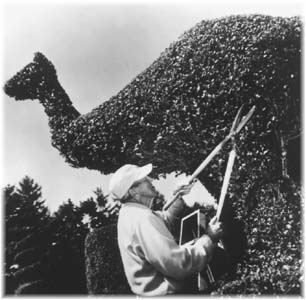
EVIDENCE FROM VISUALS AND QUOTES FROM THE FILM
The second image we see in Fast, Cheap and Out of Control is a clown being chased by a skeleton, or in other words, death. As the introduction continues, after a glimpse of each of the character’s obsessions, we see Clyde Beatty smiling, and his is the first voice we hear saying, “Don’t be afraid.” Then, he asks the boy if he’s been living in the Jungle this entire time, and we learn that the boy is from the “hidden city behind the mountain of despair,” and that it is “taboo or something.” Next, we see enormous doors opening, and then “Fast, Cheap and Out of Control.” This is as if Morris is warning us that he will be taking us through, literally opening doors to a taboo, and that we should not be afraid to accept his message about individuals who find meaning, thus truth, through their obsessions.
Next we see Clyde creeping around corners and exploring, then a lion’s mouth as well as a speaking clown, though we can’t hear his words and then the back of an ape that swings away. All of these images further the idea that Morris is taking us on an adventure where we will be exploring even if we can’t understand the message, and if we don’t he will swing away from what we have originally believed, by himself.
Further images that develop this theme of exploration and a journey into the taboo are a volcano erupting, a gun being fired into unknown darkness, clowns being shot out of cannons, a scene from “Darkest Africa” where Clyde Beatty unties himself from the knots holding his hands behind his back, and later when he is untying himself again and then he meets a charging lion head on- thus like him we must untie ourselves and be ready to meet the possibly depressing, frightening, challenging or even freeing truth. We have to be like Brooks’ robots, be “Able to fall down,” as well as “scramble over terrain.” We must find success through scrambling.

Further, Ray Mendez is introduced by a long passage through a mole rats dark tunnel, as in exploration, and then we learn about his obsession. Rodney Brooks talks about the tremendous satisfaction he feels when a robot switches on, while there is a close up on his crazed eye opening wider and he says about the robot first moving, “It had that magical sort of thing and it surprised me.”
PLAYING GOD
Back to the God issue. Morris’ documentaries can be seen as him playing a powerful god, as well as each of the four people he interviews. He creates a world for his viewers, draws ties and similarities between the characters he wants to in order to express to his viewers his truth. He wants to explain his own obsession in movie making as well as his own eccentricities through the credibility of his obsessed characters. An example from the film is when Brooks says, “I don’t tell the robot what to do, I switch it on and it does what is in it’s nature.” Just like the concept of God creating human beings and giving them freewill.
At another point, Mendez talks about how mole rats are the “Mammal that breaks the rules,” and while he is saying this Morris chooses the image of a male acrobat hanging on to a female acrobat who is suspended in the air with only something they both hold in their mouths connecting them and keeping her from a fall, and later an acrobat is supporting her whole body by a rope around her neck that holds her up. When she is swinging, Mendez is heard saying, “Incredible thing for a mammal to do.” He later says that when he got the opportunity to bring mole rats to the Philadelphia Zoo, he wanted to “set it up like a doll house,” with a “beautiful nest chamber” that in fact turned out to be the mole rats bathroom. He created and controlled an entire fake environment for his creatures.
Even Miss B. (the topiary garden belonged to her) saw it as her own little world, as if she was playing God, for she said to Mendonca, “Don’t let anyone see the garden, I want to see the garden before there’s any footprints on the path.” Just as the one man that she wanted to marry didn’t work out caused her to refuse to ever get married, she made her own Garden of Eden to assert her control. She always had it to look out her bedroom window at, and she could pick the exact colors that she wanted from it every single day. Later when Mendonca made a male scarecrow, she asked him to make a woman, just like the creation of Adam and Eve.
Dave Hoover plays God as well, for he is God of his lion taming cage. When the door shuts him in, he is the controller of his own world. Even though a little error like wearing a wrist watch put him in the hospital for three months, he went right back when he was better because his obsession is his reason for living. He says, “Once you go through the door, and close the door, you’re completely absorbed in what you’re doing.” He controls with his whips and his chairs, and the thrill of it all lies in the fact that every single time he goes in, it is never the same as before or any time after.
Hoover gives Morris’ viewers some strong advice in that when he puts up a chair to stop the oncoming lion, he puts up distraction in four new points of interest. He says that even if you get injured, you still have to finish the act. If you give in and decide to stop, the lion will get you, just as the world and its dismal realities will get you. He says you have to bluff them, for there’s no way to stop them if they know you’ve given up on your little reality- just like every single meaningless day in an un-obsessed person’s world.
DRAWING ALL THIS IMMORTAL/FEAR OF DEATH MESS TOGETHER
First I’d like to point out that Morris himself calls Fast, Cheap and Out of Control, “the ultimate low-concept movie–a film that utterly resists the possibility of a one-line summary.” I agree Mr. Morris. Another essay from Film Theory and Criticism that opens up a whole other concept of my argument is can be found in Linda Williams’ essay “Film Bodies: Gender, Genre, and Excess.” According to Freud, in our fantasies, “the connection is always tinged with the melancholy of loss” (739). Even though Morris may be trying to find this ultimate truth in how to find meaning in this life, there is a sense of melancholy throughout this film. One of the greatest moments of this sadness is when Hoover discusses Clyde Beatty’s death. Hoover acknowledges that there will never be another Beatty, and before we see Beatty’s immortal smile, we are saddened because we know he is really dead and not even the devoted Hoover will ever replace him.
Even though my argument may at times seem depressing, or as if these obsessed individuals are selfishly looking for meaning by playing God, I do not intend such an impression. None of these characters, including Morris, are causing harm with their obsessions, in fact they are offering the most important sense of meaning in their life to anyone who will stop and watch or listen. Each offers entertainment, a unique creation as well as an opening to a world we may never have come across in our own lives.
A great moment of realization is that though these characters partake in their obsession first for themselves and then for their audience, is when Rodney Brooks says, “If you analyze it too much, life becomes almost meaningless.” At this point, we see him entering a room where his fellow scientists have prepared a birthday cake for him. All of the film’s individuals are able to balance their obsession, while remaining in contact with humanity and interacting with reality. Another example is when the visual cuts from a lion’s jaws to Mendonca’s hands holding his shears while clipping a green animal. Mendonca says that he sticks with the old-fashioned hand shears because you have to stay simple, otherwise if you try newer technologies, you don’t get a clean cut, and you might even “lose an ear or a foot” in the process.
WHAT DOES IT ALL MEAN?
Consciously or not, Morris identifies himself with the mole rats. One scene shows a mole rat blindly clawing and biting at the cage to get out, while Mendez tell us about the incredible pressure in their teeth, and how they claw and chew, even though they have no idea what is really out there. After watching the Fast, Cheap and Out of Control, some might ask, what is the point of a robot being able to pick up a soda can, or trimming bushes every single day to make them look like a giraffe, or a man fighting a lion with a whip or chair as his only protection, or mole rats rolling in their feces, or even making movies for that matter? One visual that just seems crazy is the person throwing knives around the contours of another person’s body. It’s very impressive, yet some might ask is such a feat worth it? I believe Morris would say yes.
Even if each of these obsessed individuals seem out of their minds, they are continually testing their bounds because they could never be satisfied with a normal life. Morris makes it very clear that each of these obsessions gives the individual a reason to live, a reason to wake up everyday and keep going through this confusing world. Even if the fruits of their obsessions give their viewer’s enjoyment, each character lives that way for themselves first, and if an audience learns something through the experience, then so much the better. But Mendez studies mole rats for himself, Mendonca trims his green animals for himself, Brooks builds robots for himself, Hoover tames lions for himself and Morris makes movies for himself. I think it’s a huge plus that obsessive and unobsessed viewers can partake in each unique individual’s legacy.

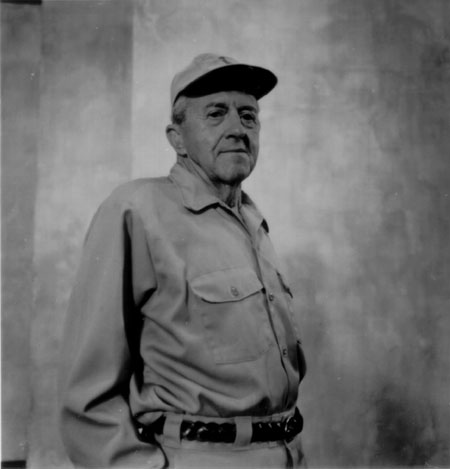
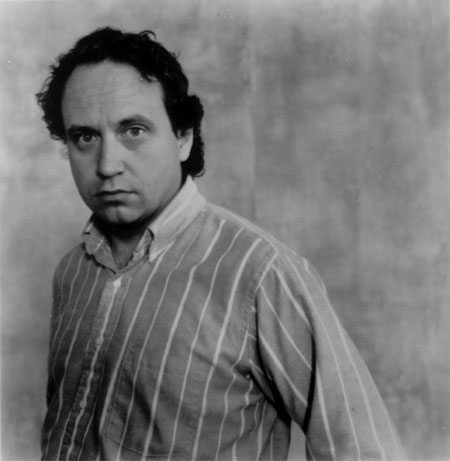
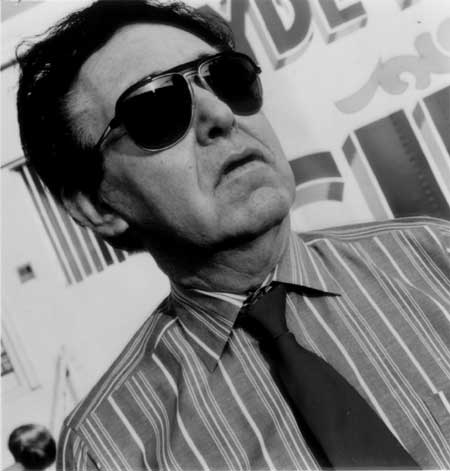
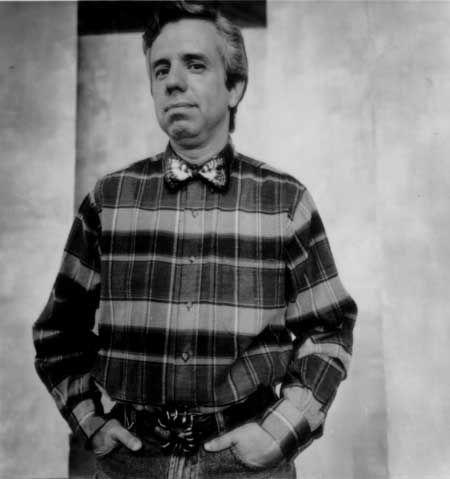
I’M NOT THE ONLY ONE WITH THESE IDEAS AM I?
Finally, I’d like to link all of these ponderings to some of my classmates blogs on similar topics. In Robyn’s Blog (because for some reason it links at first but not when I post, can be found at (http://blogs.elsweb.org/robyn/2007/03/30/im-about-to-make-a-lame-comparison-so-get-excited/),
she points out how Fast, Cheap and Out of Control is like a patch work quilt. There are tons of seemingly unconnected pieces, yet Morris brings it all together for a pleasing and meaningful whole. I agree with all that, except she asks at one point whether every little detail meant something to Morris, and then concludes no, that some things just turned out nicely. I beg to differ, because all of my argument stands on the fact that he is an obsessive person. After watching the youtube videos and several of his documentaries, I think that he really did go through and edit everything to have perfect meaning.
In She’s My Rushmore’s blog, found at http://blogs.elsweb.org/craiggrazianohmygod/2007/03/29/slow-expensive-and-entirely-in-control/
Craig discusses a lot of the same theories I presented in this blog. He found that, “This is life, this is death, this is beauty and truth all rolled into one. It’s robots, it’s mole rats, it’s lions, it’s topiary animals and it’s whatever you want to do with your energy that makes it all worthwhile.” Meaning, truth and beauty can be found in the simplest of things, but it’s up to us to decide to find an obsession and stick with it. For some it’s religion, for some it’s teaching, for some it’s controlling a country, but for some it’s even as seemingly unimportant as a naked mole rat. All I can say is, according to Morris, meaning comes from discovering whatever obsession it is.
Mark’s awesome blog, found at http://blogs.elsweb.org/marksawesomeblog/2007/04/02/thoughts-on-fast-cheap-and-out-of-control/
made me sad. I understand what he was saying, but I hope that my arguments, as well as our many in class discussions on Fast, Cheap and Out of Control would perhaps change his mind. I don’t think Morris was doing too much in the film. I think that he found such amazing epiphanies about the meaning of life from only four people and their obsessions. It’s very obvious to me after watching it that mortality was definitely on Morris’ mind, and I think that finding meaning in such a short lifetime was on it even more. I thought that all of the sped-up circus clips, interviews, racing mole rats and twisting music got Morris’ point across just as much as the actual words the men he interviews are speaking. There is so much going on in this crazy world, and it is full of confusion, and finding meaning through it all is daunting-like finding meaning in this documentary. Just like, Vertigo, which Mark actually commends for all of its vertigo-instilling imagery, shots and music, I think the confusion and fast tempo of Fast, Cheap and Out of Control conveys a main point of the film.
THIS IS IT I PROMISE
So, I didn’t want to divulge into a whole other thesis and confuse my readers even more, especially when I have already gone way over the word count on this assignment, but I had another thought on this film that I would like to add to these ideas with another blog when a) it is no longer finals week and b)I have developed it further. Here it goes, if anyone is interested in the notes:
Actual use of camera and Interrotron
*”The principle of transcendence which conditions and is conditioned by the perspective construction represented in painting and in the photographic image which copies from it seems to inspire all the idealist paeans to which the cinema has given rise: (Baudry quotes Coneh-Seat) ‘This strange mechanism, parodying man’s spirit, seems better to accomplish the latter’s own tasks. This mimetic play, brother and rival of the intelligence, is, finally, a means of the discovery of truth.'” Basin says this art “‘presents us the idea of a hierarchical universe, ordered in terms of an ultimate end. Behind what film gives us to seem it is not the existence of atoms that we are led to seek, but rather the existence of an”other world” of phenomena, of a soul or of other spiritual principles.'” (358)
(from Jean-Louis Baudry’s article “Ideological Effects of the Basic Cinematographic Apparatus”)
camera and editing process:
“The place of the instrumental base in the set of operations which combine in the production of a film between “objective reality” and the camera, the site of inscription, and between the inscription and the projection are situated certain operations, a work which has as its result a finished product.” “Equally distant from “objective reality” and the finshed product, the camera occupies an intermediate position in the work process which leads from raw material to finished product. Though mutually dependent from other points of view, decoupage (shot breakdown before shooting) and montage (editing, done afterwards) must be distinguished because of the essential difference in the signifying raw material on which each operates: language (scenario) or image. Between the two complementary stages of production a mutation of signifying material takes place(neither translation nor transcription, obviously, for the image is not reducible to language) precisely in the place occupied by the camera.” (356)
Interrotron- for eye contact, registers, connection,34:00 in youtube video Morris says, “cachunk, you feel it””freud had the couch I have the interrotron” both looking directly at each other while looking through a screen, television that cares, because thats what people do best, watch tv…stands for interview and terror
“Documentaries operate on a principle of minimal intervention, in the interests of bringing the authority of reality to the support of the moral purpose of the film.” (191)Maya Deren’s article “Cinematography: The Creative Use of Reality”
POSSIBLE ADD-IN
Here’s Morris’ version of the casting out of adam and eve from the garden of eden”ill give man self-deception, things will really be horrible out there, but people won’t notice” so morris’ obsession is looking for truth bc he believes in its existence, it’s just we’re blinded by this self-deception



